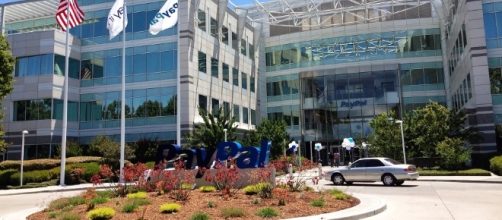Though PayPal Holdings, Inc. first offered stock in February 2002, in a deal that raised $70.2 million for the online payment company, it was all purchased by eBay Inc. (Nasdaq: EBAY) in July of the same year. EBay maintained its ownership of PayPal until July 2015, when PYPL stock became available to the public for a second time, and one of the original digital disrupters was spun off, independent once again. The current incarnation of PayPal equity might be described as a more mature version of the younger PYPL shares; the latest issue began trading at $38, and has ranged between a low of $30 and a high of $44.52 since.
PYPL stock first broke above the high of its IPO consolidation, $42.55, set on July 20, 2015, on October 21, 2016. Shares attempted to follow through on the next trading day, October 24, before falling back, and then traced a cup-like five-month base, with a local high of $43.07 acting as a final line of resistance for prices, before the potential vacuum of new high ground.
FB and NFLX stock each staged strong post-breakout runs
Some stocks, such as Facebook, Inc. (Nasdaq: FB) and Netflix, Inc. (Nasdaq: NFLX), have experienced rapid price markups in the weeks and months following breakouts from both IPO and secondary price consolidations. Investor's Business Daily, who has termed the price consolidations growth stocks like FB and NFLX make on price charts "bases," and suggests that investors who buy consolidation breakouts limit losses to a maximum of 8 percent, and to aim for average losses of even less than that.
Asset allocation and diversification are among other techniques the business publication, founded by William J. O'Neil, espouses with regard to risk management.
It as been previously noted that both FB stock and stock in Fitbit, Inc. (NYSE: FIT) experienced sharp post-IPO base breakouts, but that FB, which has continued to increase its profits, stock maintains its gains, while FIT stock has fallen to near $6, about 88 percent from its high. PayPal has no problems with profitability. However, a lack of momentum following the October 2016 PYPL stock breakout may be an indication of another problem: slow growth.
Can PYPL stock breakout?
With a market capitalization of close to $52 billion, no debt, and forecast earnings per share growth of 14.7 and 18.6 percent, in 2017 and 2018, respectively, PayPal's gross profits of $10.84 billion have, so far, done little to whet the appetite of momentum investors, with the tight range of PYPL stock since its spin off being held up as evidence.
PYPL stock has been solid as a rock, but, so far, new highs have acted as a repellent, rather than a magnet, for prices.
Can PYPL stock breakout, and move significantly higher, perhaps concurrently with strong action in other institutional quality, liquid-growth names, such as FB, NFLX, and Snap, Inc. (NYSE: SNAP)? The general market, as measured by the Dow Jones Industrial Average and S&P 500 Index, sits near all-time highs, an an indication of overall strength, as well as an abundance of speculative sentiment. Federal Reserve Chair Janet Yellen has responded to recent action by putting an interest-rate hike on the table for later this month, described by Reuters as an "end to easy money." A chart of the price of PYPL stock since the July 2015 eBay spin off, detailing its IPO and current consolidations, is included in the image gallery.

